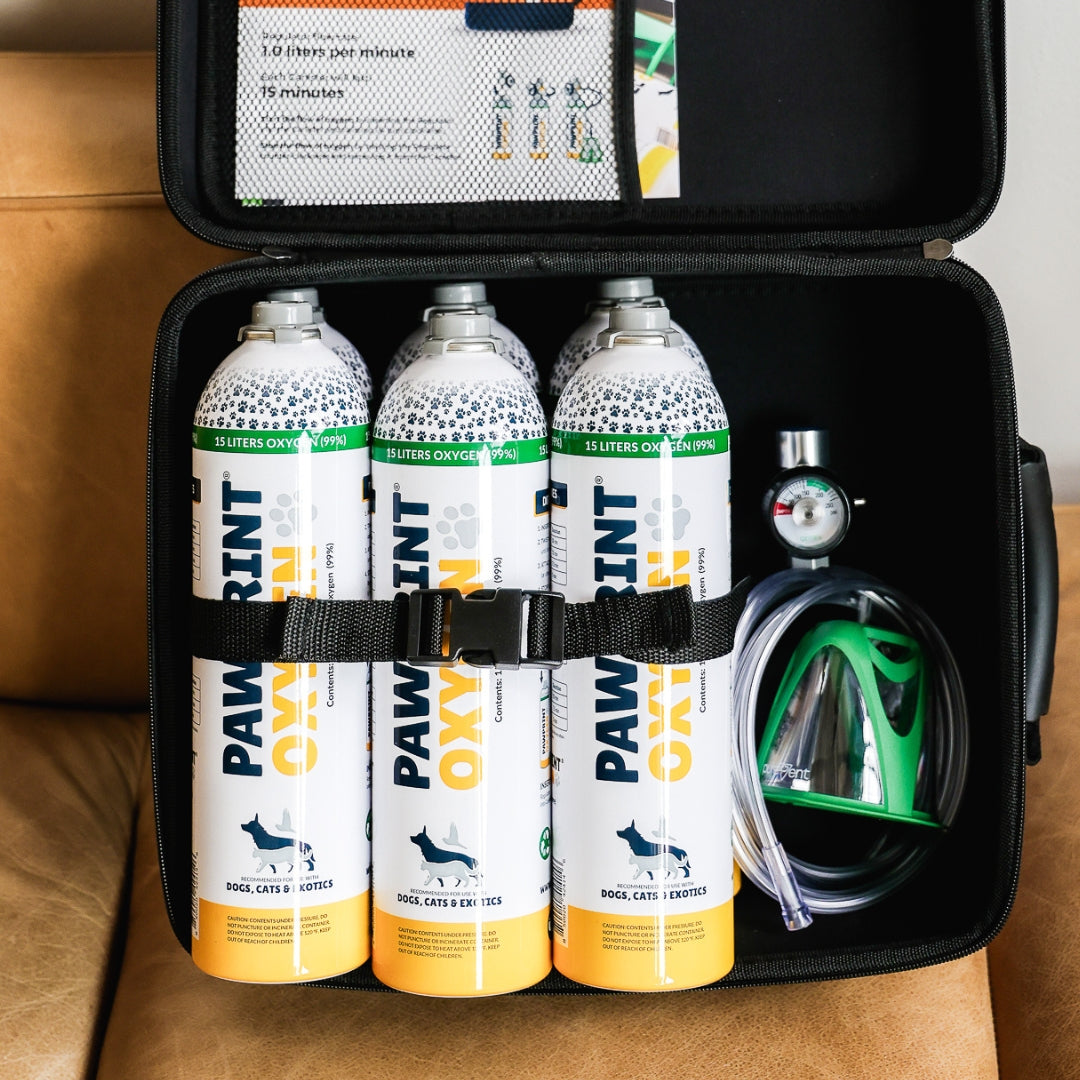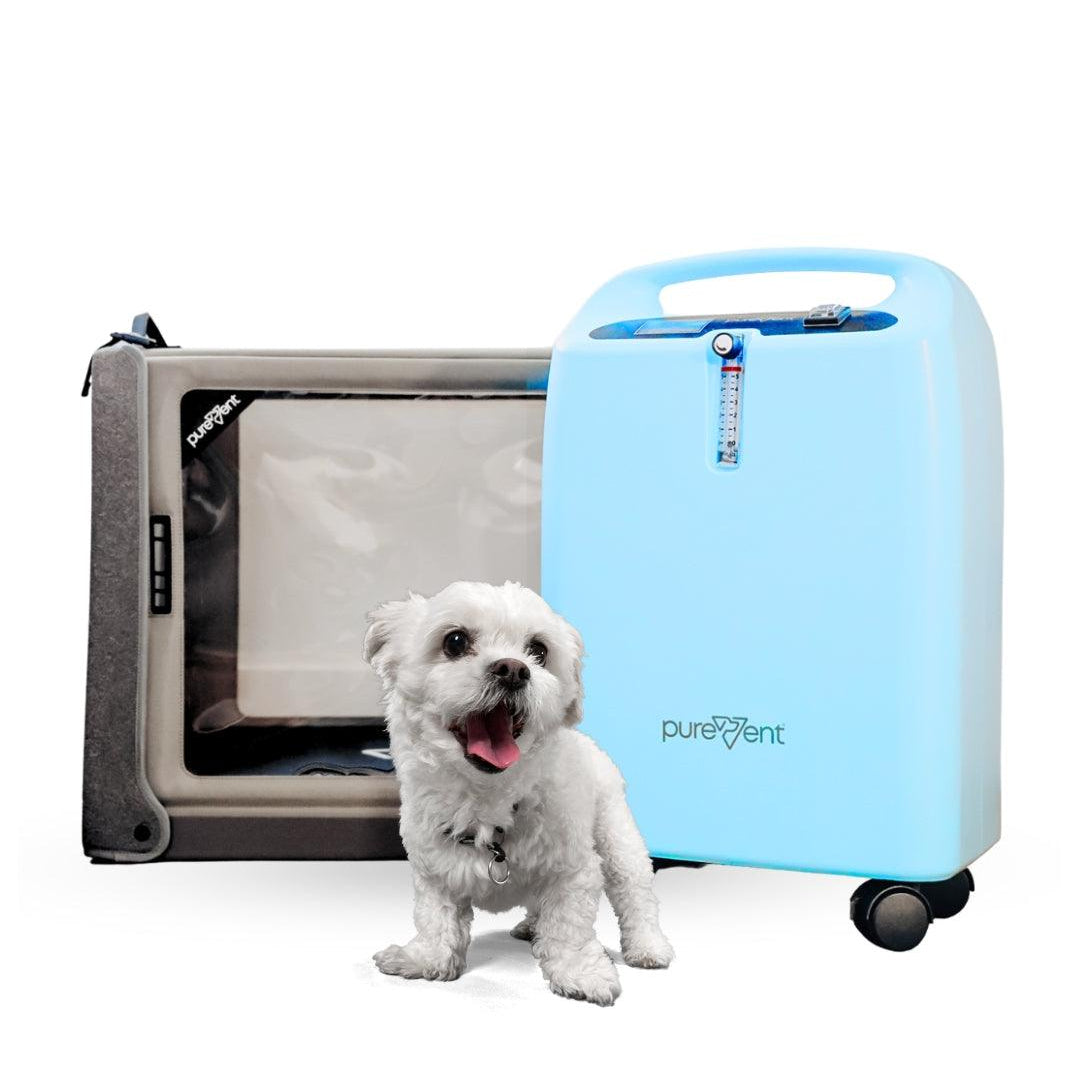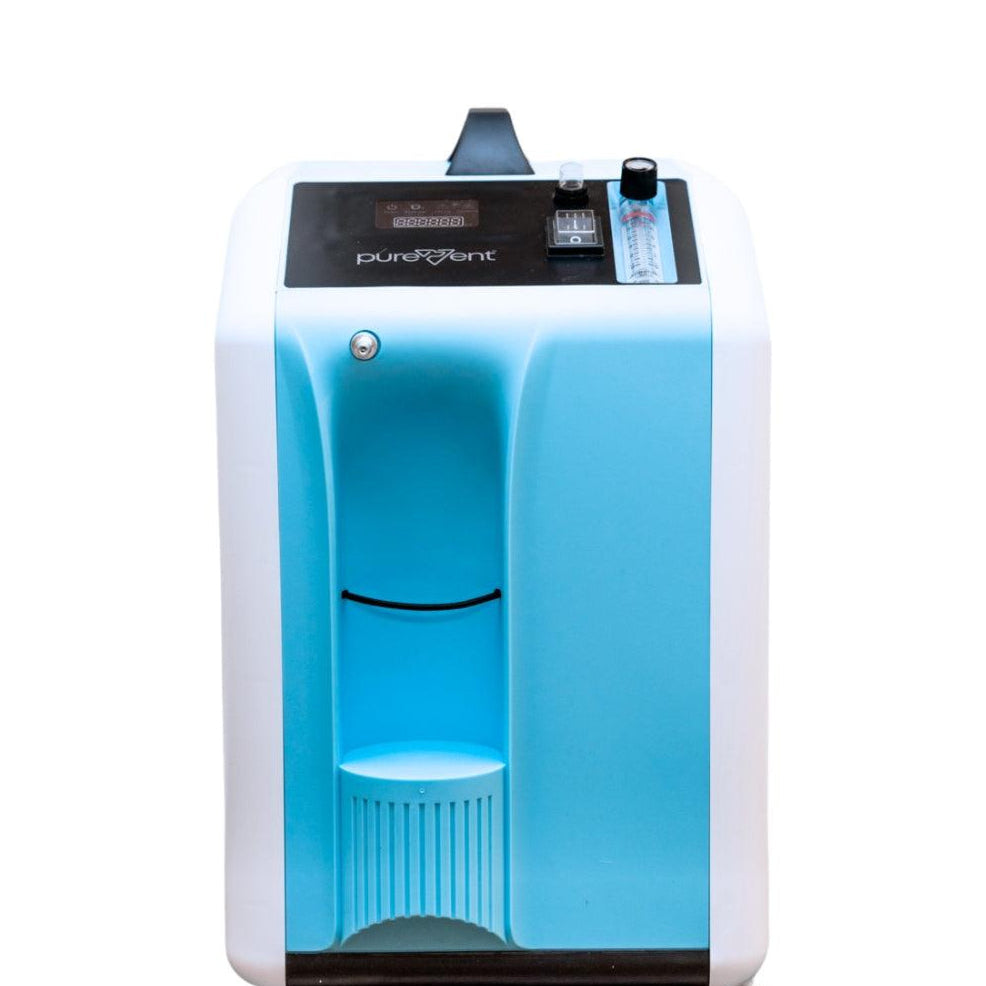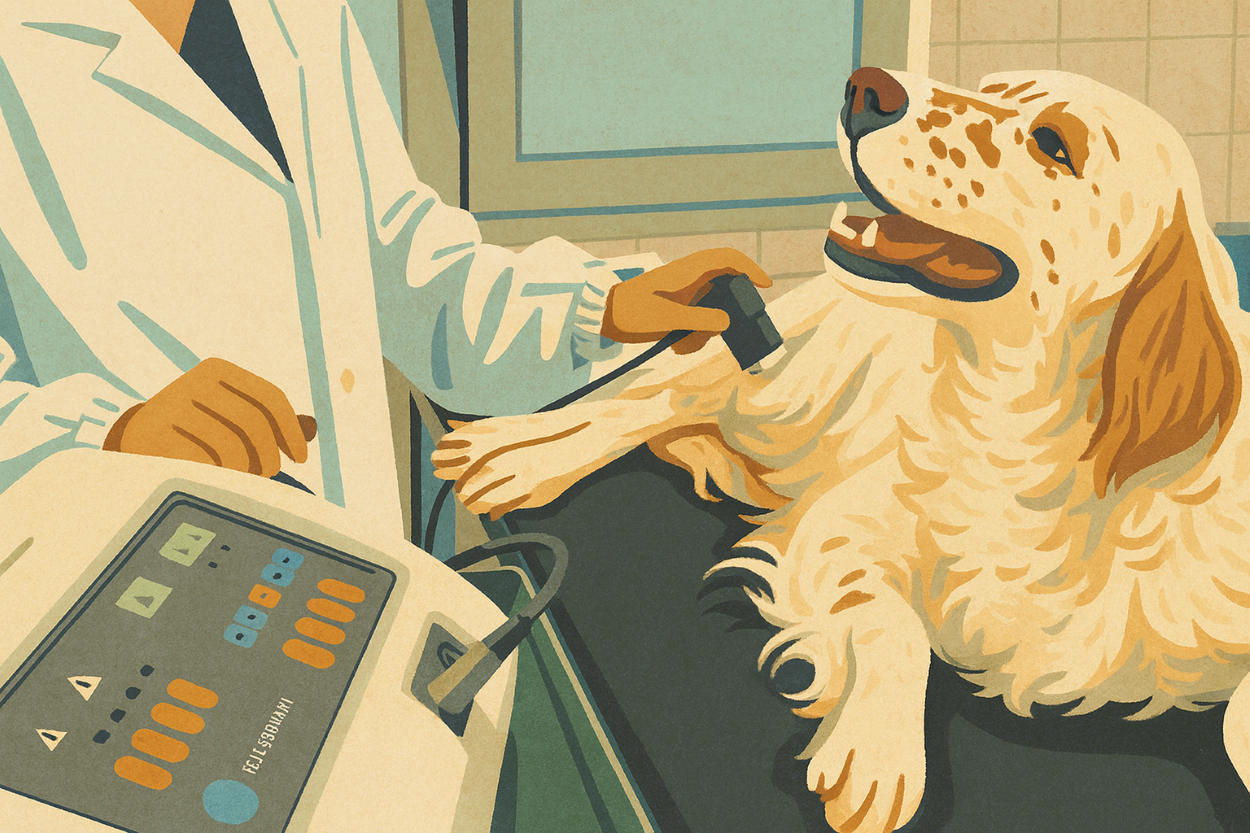Does your furry friend suffer from seizures? If so, it's important to know how to provide immediate relief. In this article, we'll discuss effective dog seizure treatments that can help alleviate your pet's discomfort.
Seizures in dogs can be scary and distressing for both pets and their owners. However, with the right treatment and care, you can help your canine companion feel better and reduce the frequency and severity of seizures.
One of the most common treatment options for dog seizures is medication. Veterinarians may prescribe anticonvulsant drugs to help control and manage seizures. These medications work by stabilizing the electrical activity in the brain, reducing the chances of seizures occurring.
Alongside medication, there are other strategies you can employ to provide immediate relief during a seizure. These include creating a calm and safe environment for your dog, keeping them away from hazardous objects, utilizing oxygen therapy and avoiding physical restraint.
By understanding the different treatment options available and implementing proper care during a seizure, you can help your furry friend find relief and live a more comfortable life. Stay tuned for this comprehensive guide on effective dog seizure treatments.
Table of Contents
Understanding Dog Seizures
Seizures in dogs are caused by abnormal electrical activity in the brain, leading to a range of symptoms that can vary in severity and duration. This condition can affect dogs of all ages, breeds, and sizes, although certain breeds may be more predisposed to experiencing seizures.
The most common type of seizure seen in dogs is a generalized seizure, which involves the entire body and can result in convulsions, loss of consciousness, and muscle rigidity. Understanding the nature of these seizures is crucial for dog owners, as it helps them recognize symptoms and respond appropriately.
The underlying causes of seizures in dogs can be categorized into several groups, including genetic factors, metabolic disorders, and environmental influences. For instance, some dogs may have a hereditary predisposition to seizures, while others may develop them as a result of liver disease, kidney failure, or exposure to toxins. Additionally, factors such as head trauma, infections, and tumors can also contribute to the onset of seizures. Identifying the underlying cause is an essential step in determining the most effective treatment plan for the affected dog.
It is important for dog owners to observe their pets closely and document any seizure activity, including the duration, frequency, and symptoms exhibited during a seizure. This information can be invaluable when consulting a veterinarian, as it helps in diagnosing the condition and tailoring a treatment strategy. The more informed the owner is about their dog's seizures, the better equipped they will be to provide effective care and seek appropriate veterinary assistance.
Common Triggers for Dog Seizures
Recognizing the common triggers that may lead to seizures is vital for managing this condition effectively. Various factors can provoke seizures in dogs, and understanding these triggers can help owners minimize the risk of occurrence. One of the most prevalent triggers is stress, which can arise from changes in the dog's environment, loud noises, or even separation anxiety. When dogs experience heightened stress levels, it can set off seizures, making it essential for owners to create a calm and stable environment for their pets.
Another common trigger is exposure to toxins. Dogs are naturally curious creatures and often explore their surroundings with their mouths. Ingesting toxic substances—such as certain plants, human medications, or chemicals—can lead to seizures and other serious health issues. Owners should be vigilant about keeping harmful substances out of their pets' reach and educating themselves about common household items that can be toxic to dogs. If poisoning is suspected, prompt veterinary intervention is crucial.
Additionally, medical conditions such as epilepsy, which is a neurological disorder characterized by recurrent seizures, can also serve as triggers. In these cases, seizures may occur without any identifiable external cause. Identifying whether a dog has a specific medical condition that predisposes them to seizures can help guide treatment decisions and improve overall quality of life. Observing patterns and keeping a detailed record of seizure episodes can aid in identifying triggers, enabling owners to take proactive measures.

Signs and Symptoms of a Dog Seizure
Recognizing the signs and symptoms of a dog seizure is essential for providing timely assistance and care. Seizures can manifest in various ways, and their appearance may differ from one dog to another. The most common symptoms include convulsions, where the dog exhibits uncontrollable shaking and muscle spasms, often accompanied by a loss of consciousness. During this phase, the dog may fall to the ground, paddle their legs, and exhibit jerking movements. These convulsions can last anywhere from a few seconds to several minutes.
Before a seizure occurs, some dogs exhibit warning signs known as the preictal phase. This phase may include behavioral changes such as restlessness, excessive barking, or seeking comfort from their owner. Recognizing these signs can help owners prepare for the impending seizure and ensure the dog is in a safe environment. Some dogs may also experience a postictal phase after a seizure, which can involve confusion, disorientation, or temporary blindness. During this time, the dog may appear dazed and may not respond to commands as they normally would.
It’s important for dog owners to remain calm during a seizure episode. While the sight of a dog having a seizure can be distressing, panicking can hinder your ability to provide effective support. Understanding the different phases of a seizure and the symptoms that accompany them can help owners respond appropriately, ensuring their pet is safe and secure until the episode passes. Keeping a record of the frequency and duration of seizures can also be beneficial for veterinary consultations, helping to determine the best course of action for treatment.
Preictal Phase
Some dogs experience "phantom" scratching or licking behaviors, often targeting specific areas on their body, even if there’s no physical irritation or cause. This peculiar pre-seizure behavior is thought to be linked to abnormal sensory experiences caused by the unusual brain activity that leads up to the seizure. These repetitive or seemingly "odd" actions can sometimes be a subtle but telling sign that a seizure is imminent, especially in dogs with a history of epilepsy.
Immediate Actions to Take During a Dog Seizure
When a dog experiences a seizure, the immediate response from the owner can significantly impact the dog's safety and comfort. The first step is to ensure that the environment is safe. Clear away any nearby objects that could potentially harm the dog, such as sharp furniture or hazardous items, to prevent injury during the seizure. It is crucial to create a safe space for the dog, allowing them to lie down without the risk of falling or injuring themselves.
Next, owners should avoid physically restraining the dog during the dog's seizure. While it may be instinctual to try to hold the dog still, this can lead to injury for both the pet and the owner. Instead of restraint, it is essential to observe the seizure closely and time its duration. Knowing how long the seizure lasts is vital information to share with the veterinarian afterward, as prolonged seizures can be a medical emergency requiring immediate intervention.
After the seizure has ended, it is important to provide comfort and reassurance to the dog. Many dogs may feel disoriented or frightened after experiencing a seizure, so speaking softly and gently can help them feel more secure. Offer a calm presence and avoid overwhelming them with attention. Once the dog regains full awareness, monitor them for any unusual behavior or ongoing symptoms that may require veterinary attention. Always be ready to seek help if the seizure lasts longer than five minutes or if multiple seizures occur in a short period.

Utilizing Oxygen After Your Dog's Seizure
Administering oxygen to your dog after a seizure can be highly beneficial for several reasons:
Enhances Oxygen Delivery:
Dog seizures can temporarily disrupt normal breathing and oxygenation. Oxygen therapy ensures that the brain and other vital organs receive sufficient oxygen, which is crucial for recovery after a seizure.
Reduces Brain Swelling:
Dog seizures can cause cerebral edema (swelling of the brain). Oxygen can help reduce swelling, potentially minimizing damage to brain cells.
Supports Metabolic Needs:
After a seizure, the body's metabolic demands can increase. Supplemental oxygen can help meet these increased needs, supporting the recovery process.
Stabilizes Condition:
Oxygen therapy can help stabilize a pet's condition post-seizure, allowing for better assessment and management of the underlying cause.
Pawprint Oxygen offers Emergency Rescue Oxygen Kits designed for such situations. These kits are portable and user-friendly, allowing pet owners to administer oxygen therapy promptly during or after a seizure, providing immediate support until veterinary care is available.
By having an Emergency Rescue Oxygen Kit on hand, you can offer critical assistance to your dog during post-seizure recovery, potentially improving outcomes and providing comfort during a distressing time.
Natural Remedies for Dog Seizures
In addition to conventional treatments, many dog owners explore natural remedies to help manage their pets' seizure conditions. These remedies may provide supportive care and potentially reduce the frequency or severity of seizures. One popular approach is the use of herbal supplements, such as valerian root, passionflower, and skullcap, which are believed to have calming properties. These herbs can help alleviate anxiety and stress, which may be contributing factors to the occurrence of seizures.
Another natural remedy that has gained popularity among dog owners is the use of omega-3 fatty acids, often found in fish oil. Studies suggest that omega-3 fatty acids may have neuroprotective effects and can promote brain health, potentially reducing the likelihood of seizures. Including foods rich in omega-3s, such as salmon or flaxseed oil, in your dog's diet can be a beneficial step in managing their condition. However, it's essential to consult a veterinarian before introducing any new supplements to ensure they are appropriate for your dog's specific health needs.
Additionally, some dog owners find success with acupuncture and other holistic approaches. Acupuncture is an ancient practice that involves inserting thin needles into specific points of the body to promote healing and balance. Many pet owners report positive results with acupuncture, particularly in reducing the frequency and intensity of seizures. It is advisable to seek a qualified veterinarian who specializes in alternative therapies to ensure the best care for your dog.
What is a seizure?
A seizure is a temporary episode of abnormal electrical activity in the brain that causes a variety of symptoms, like loss of consciousness, uncontrollable movements, and difficulty breathing.
How do I know if my pet is having a seizure?
Recognizing a seizure can be challenging, especially if you've never seen one before. Some signs that may indicate your pet is having a seizure include uncontrollable muscle movements, loss of consciousness, collapse, excessive drooling, loss of bladder or bowel control, and repeated movements or actions.
What should I avoid doing if my pet is having a seizure?
It's essential to avoid certain actions to ensure both your pet's safety and your own. Here are a few things NOT to do if your pet is seizing: Do not put your hands near your pet's mouth. Do not try to restrain your pet or move them unnecessarily. Do not give them food or medications until they are conscious. Do not shout or make loud noises. Do not panic.
Medications for Treating Dog Seizures
When it comes to managing seizures in dogs, medications are often a cornerstone of treatment. Veterinarians may prescribe anticonvulsant medications to help control and stabilize the electrical activity in the brain, thereby reducing the frequency and severity of seizures. Commonly prescribed medications include phenobarbital, potassium bromide, and levetiracetam. Each of these drugs works in a different way to manage seizures, and the choice of medication will depend on the dog's specific condition, age, and overall health.
Phenobarbital is one of the most widely used anticonvulsants for dogs, known for its effectiveness in controlling seizures. However, it can have side effects, including sedation and potential liver toxicity, so regular monitoring through blood tests is essential. Potassium bromide is another option, often used in conjunction with phenobarbital for dogs that do not respond adequately to a single medication. Levetiracetam is a newer medication that is gaining popularity due to its favorable side effect profile and rapid onset of action.
It is crucial for dog owners to work closely with their veterinarian to find the right medication and dosage for their pet. This may involve some trial and error, as each dog may respond differently to various medications. Regular follow-ups and communication with the veterinarian are essential to monitor the effectiveness of the treatment and make any necessary adjustments. Additionally, owners should be aware of potential side effects and report any concerning changes in their dog's behavior or health to their vet promptly.
Lifestyle Modifications to Reduce the Frequency of Dog Seizures
In addition to medical and dietary interventions, lifestyle modifications can significantly impact the frequency and intensity of seizures in dogs. One of the most effective changes owners can make is to establish a consistent daily routine. Regular feeding schedules, exercise, and sleep patterns can help create a sense of stability for the dog, reducing stress and anxiety that may trigger seizures. Maintaining a predictable environment can contribute to a calmer demeanor, which is beneficial for dogs prone to seizures.
Exercise is another crucial component of a healthy lifestyle for dogs with seizures. Regular physical activity can help reduce stress levels and promote overall well-being. Engaging in low-impact activities, such as walking or swimming, is often recommended, as they provide mental and physical stimulation without overexerting the dog. However, it's important to avoid strenuous exercise, especially during hot weather, as overheating can also be a trigger for seizures.
Furthermore, minimizing exposure to potential triggers, such as loud noises or stressful situations, can help manage seizure activity. Owners should be mindful of their dog's reactions to different stimuli and make adjustments to their environment as needed. For instance, creating a quiet space where the dog can retreat during stressful times can be beneficial. By implementing these lifestyle changes, dog owners can help reduce the likelihood of seizures and improve their pet's overall quality of life.

Providing the Best Care for Dogs with Seizures
Caring for a dog with seizures can be a challenging journey, but with the right knowledge, support, and resources, owners can make a significant difference in their pet's quality of life. Understanding the nature of seizures, recognizing common triggers, and being aware of the signs and symptoms are crucial steps in providing effective care. By implementing immediate actions during a seizure and exploring various treatment options, including medications, dietary changes, and alternative therapies, owners can help their dogs lead more comfortable lives.
Moreover, fostering a supportive environment through lifestyle modifications and consistent routines can greatly reduce the frequency of seizures. It is vital for dog owners to maintain open communication with their veterinarian, ensuring that any changes in their pet's condition or behavior are promptly addressed. By collaborating with veterinary professionals and being attentive to their dog's needs, owners can create a comprehensive care plan tailored specifically for their furry friends.
In the end, being proactive and informed about seizure management can empower dog owners to provide the best possible care for their beloved pets. While it may be a challenging road, the bond between a dog and its owner can be strengthened through shared experiences and dedicated support. With love, patience, and the right approach, dogs with seizures can enjoy fulfilling lives filled with joy and companionship, making every moment spent together all the more precious.






















